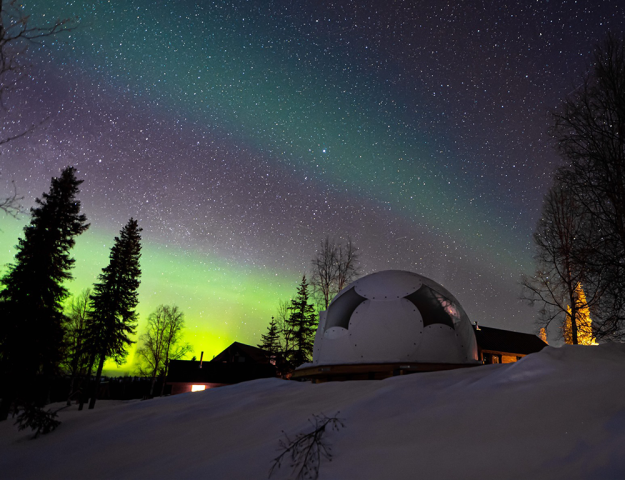“The Polar Dome has outgrown the bounds of the simple emergency shelter!”

You are the inventor of the Polar Dome intended for the homeless. There are already many solutions in this field. How is your “home” different from others?
For many reasons! In fact, our concept is almost the sum total of the best that has been achieved in the field. Let me explain: The Polar Dome is lightweight and as easy to assemble as a canvas shelter, it is stronger than a wooden or metal shelter and has a very low carbon footprint. Moreover, it is in a very reasonable price range. I think we have managed to bridge the gap between ultra-light canvas structures and wooden or metal shelters. In addition, we meet all U.S. construction standards and are certain that our shelters have a lifespan of several decades. This may seem paradoxical for emergency shelters, but why not offer more where possible. For us this is important because the Polar Dome is not just for the homeless.

|
As light as canvas, stronger than wood, and it meets modern standards. What materials were used to make the Polar Dome?
In order to meet all the requirements contained in the specifications, we turned to polymers: lightweight materials that are easy to maintain, strong, and affordable. The envelope is a composite of polymer resin and fibreglass, the same material used to build boat hulls that have to withstand the pounding of the waves. This composite can be very heavy depending on its thickness, which is why we have reduced it to a minimum.

|
The walls of the dome are barely 4 mm thick. Their strength is well proven and they are very easy to maintain. The floor is made of acrylonitrile butadiene styrene (ABS), a polymer that is also very strong and that is used to make motorcycle helmets and car headlights. Of course, the domes are insulated. To do this, we opted for expanded polystyrene, a very classic and very effective material in the field of thermal insulation. |
Why a dome shape?
Because it is the best shape for reducing wind resistance. I would remind you that the domes were originally intended for emergency housing and that certain geographical areas are surrounded by cyclones. We did not want the victims of one cyclone to see their temporary housing destroyed by a second one. The round shape enables it to withstand gusts of over 300km/h as it offers virtually no wind resistance. The domes can also be easily installed in cold regions because snow will not accumulate on the roof and therefore will not risk crushing them. Finally, it is a shape that allows it to sit flush with the ground, making the dome relatively resistant to earthquakes. This effect is further amplified by the elastic nature of the polymers which ensures that they are flexible enough not to break or collapse.

|
The combination of the dome shape and polymers has proven to be a winning formula. The various plastics used are very easily mouldable and can thus take on any shape. If wood had been the ideal material, creating such a dome would have been a much more complicated endeavour.
On that note, how are they set up?
They can be set up in three hours by three people who are not specifically qualified to assemble them. The Polar Dome is delivered as a set of plates that just need to be fixed together. It is child's play! Disassembly takes only a few minutes. The plates are easily stored flat and the nature of the polymers means that you do not have to worry too much about maintenance.
Apart from the homeless, who else uses them now?
A lot of people! But first I would like to remind you why I had the idea of launching this company in 1992. At that time, there were a lot of homeless veterans in the United States. It was intolerable to me and I thought that we really had to do something for “those guys”, especially in Los Angeles where there was a large community of homeless veterans. So I looked into the issue of refugee shelters, but I thought we could improve the concept because what was on the market did not seem satisfactory to me.
|
I wanted to create a new type of shelter that was cheap, robust and that could be quickly set up in all parts of the world. The Polar Dome is the result of an intense reflection on the shape, the choice of materials and the assembly technique, as I have already explained. We were looking for the very best in the field and I believe that today we are not very far from having achieved it! |

|
Coming back to the question, I would say that in thirty years, we have exceeded all our objectives since our domes are certainly used by the homeless, but also by humanitarian organisations such as Doctors without Borders who convert them into field hospitals, particularly in Africa. To make this possible, we had to develop a system by which they could be joined together. We have also offered them to the US Army, which uses them as temporary accommodation during external operations or as research stations in the Arctic. They are also found in some campgrounds.... So even though we did not predict that many opportunities for them, we certainly got their design right.

|





